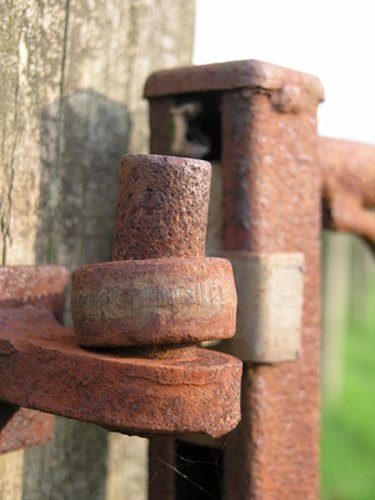Things You'll Need
Salts of lemon
Water
Basin
White vinegar
Lemon juice
Hydrogen peroxide
Pumice stone
Hard-back sponge
Commercial steamer

Iron mould or rust stains occur when an object that has rust on it remains in contact with another object and the stain transfers. This can occur on any surface including walls, floors and fabric. These stains are more stubborn to remove than the regular spots that happen in everyday life, but with a little hard work and common sense, many of these stains can be removed quite safely.
Step 1
Bring together 1 tbsp. of salts of lemon and 1 qt. of boiling water in a basin. Place the stained item into the water and salt mixture for 15 minutes. If the item cannot be moved, rub the salts into the area and pour the boiling water over it.
Video of the Day
Step 2
Pour white vinegar over the stain and allow it to soak for half an hour. Flood the area with cool water to rinse out the vinegar. If the stain is on something you can lift, soak it in the vinegar for half an hour and then wash as you normally would.
Step 3
Mix together 2 tbsp. cream of tartar and hydrogen peroxide, adding the hydrogen peroxide a few drops at a time just to make a paste. Rub it on any white item with stains. Rinse in cool water.
Step 4
Make a paste using table salt and lemon juice. Spread that on a carpet or large area such as a blanket. Flood the area with a lot of cool water to remove.
Step 5
Use a commercial steamer if nothing else works. The soap and the steaming mechanism will get beneath the stain and should remove it.
Step 6
Use a pumice stone on enamel fixtures such as sinks or toilets that have iron mold or rust. Use a hardback sponge to remove any bits of rust or iron mold from stainless steel.
Tip
Move furniture made from metal every month so the feet do not stain the carpet.
Use plastic or wooden hangers for clothing.
Warning
The citric acid in lemon juice can bleach certain materials. Try to test it on an unnoticeable section before using all over.
Video of the Day